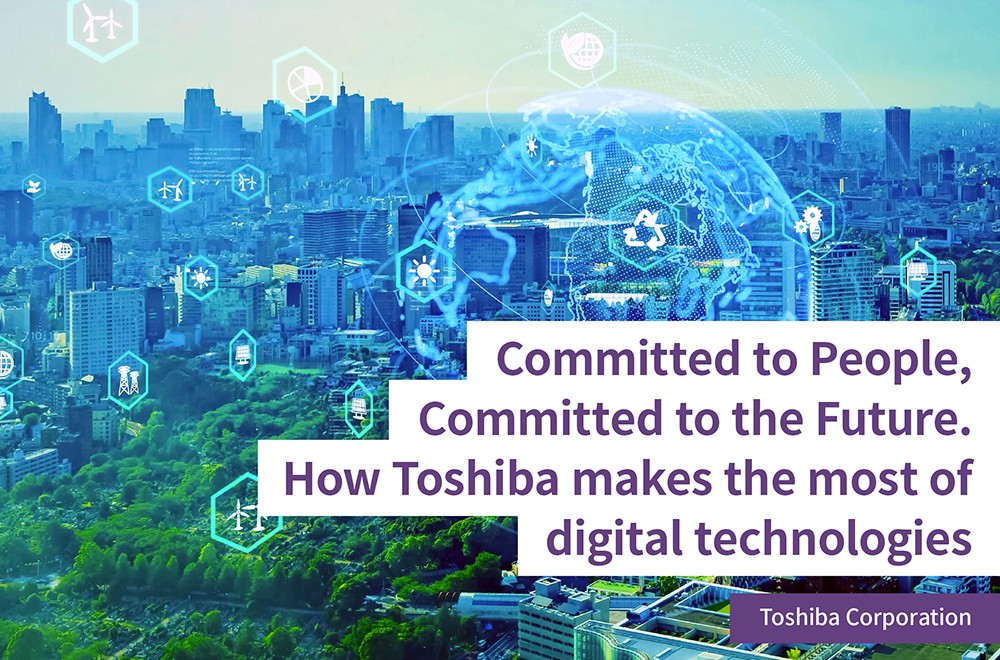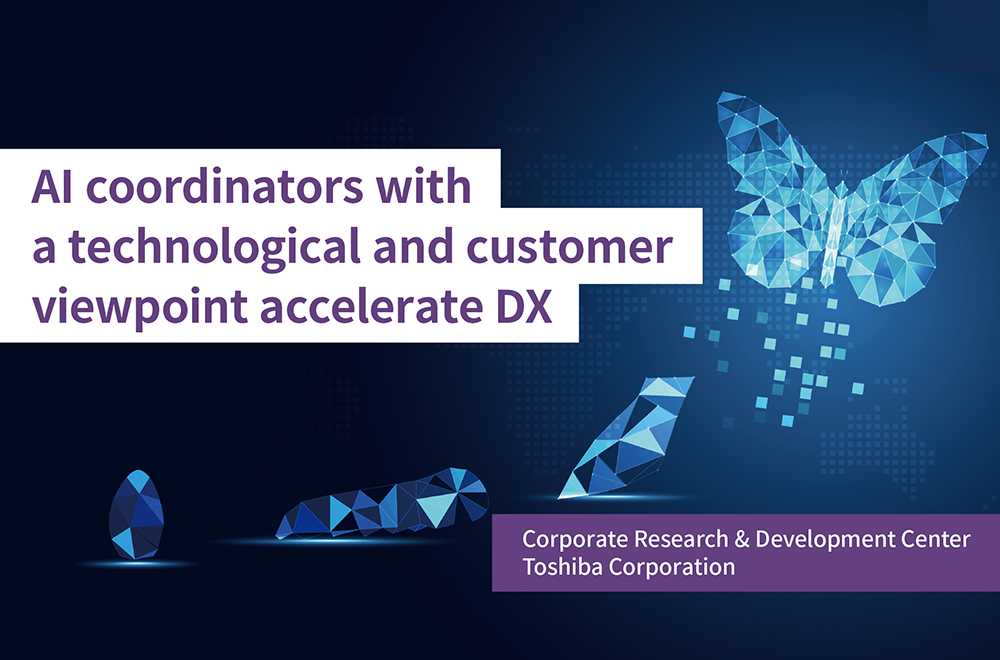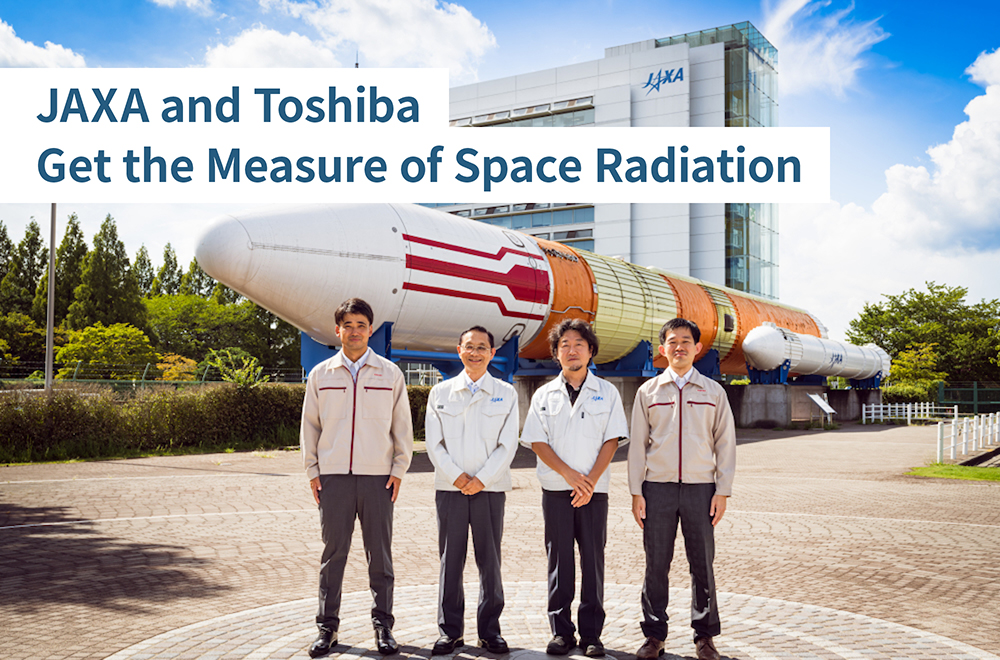Getting the Best from Reliable Hardware with Software Defined, Part 2 -Utilization of Open Source Software Within and Outside the Company Increases Overall Strength
2023/05/24 Toshiba Clip Team
- The trend of the times is toward openness in ideas and development.
- Toshiba is drawing on open source software to solve problems.
- Promoting the company’s overall strength through external collaboration.
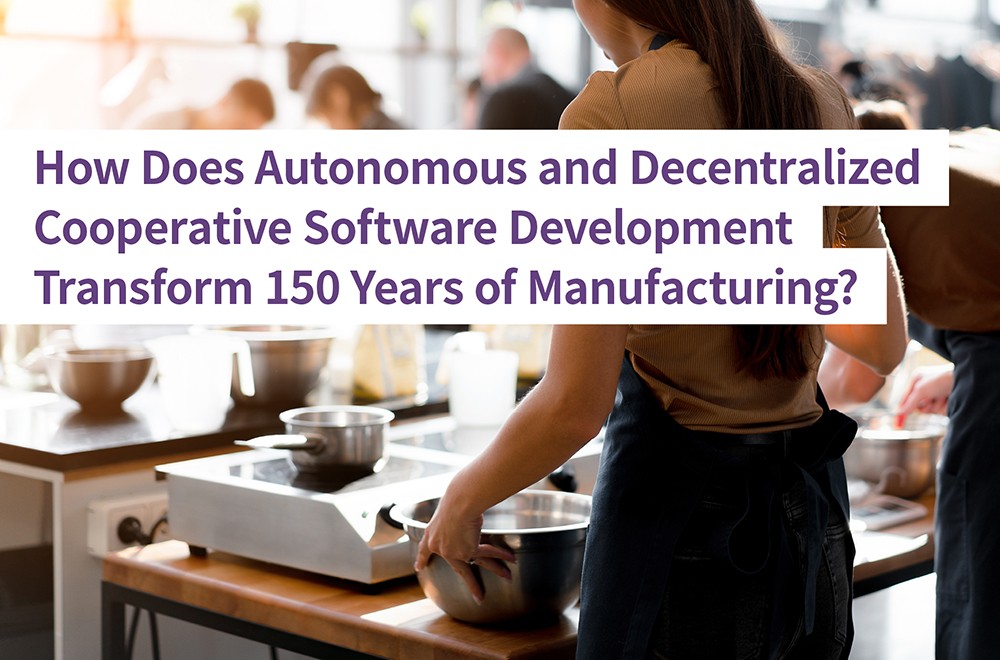
We are surrounded by products that offer additional or updated functions defined by software. One is the Apple Watch, hardware that uses sensors and an electrocardiogram app—software—to detect atrial fibrillation, a cause of strokes and other problems. Since its introduction, the watch’s ability to monitor and report on an irregular heartbeat and catch atrial fibrillation has been refined with machine learning. This approach of designing and manufacturing hardware with the intention of subsequently developing and updating software is grounded in the idea of software defined*” and it is attracting a lot of attention.
*The central idea is to prepare for the future by reviewing the division of functions to maximize the flexibility of the software and the reliability of the hardware, and so achieve desired value and objectives.
Part 1 of this article covered how Toshiba, which is promoting reform through software-defined innovation, has identified two challenges to its management strategy: internal rigidities that result from in-house organizations that operate in a vertical, self-contained manner; and external rigidities that result from too strong a self-focus and shortfalls in promoting external collaborations. This second part takes a detailed look at the open-source concept Toshiba is using to break down these problems.
The Corporate Software Engineering & Technology Center, Toshiba’s software development research organization, is taking the lead in promoting open source. Yoshitake Kobayashi, the Center’s Director, explains why, and why he feels a growing sense of urgency to break through external rigidities: “The Internet has become infrastructure that connects all sorts of hardware and software. Products are becoming more sophisticated, and we won’t be able to compete in this age of rapid change if we develop all of our software in-house, from scratch.
The Corporate Software Engineering & Technology Center changes how development work is done
“Our start and end points at the Center remain the same,” Kobayashi says emphatically, “the development of high quality software. But closed development just cannot keep up with the times, and in order to promote software defined we need to cultivate an open environment.”
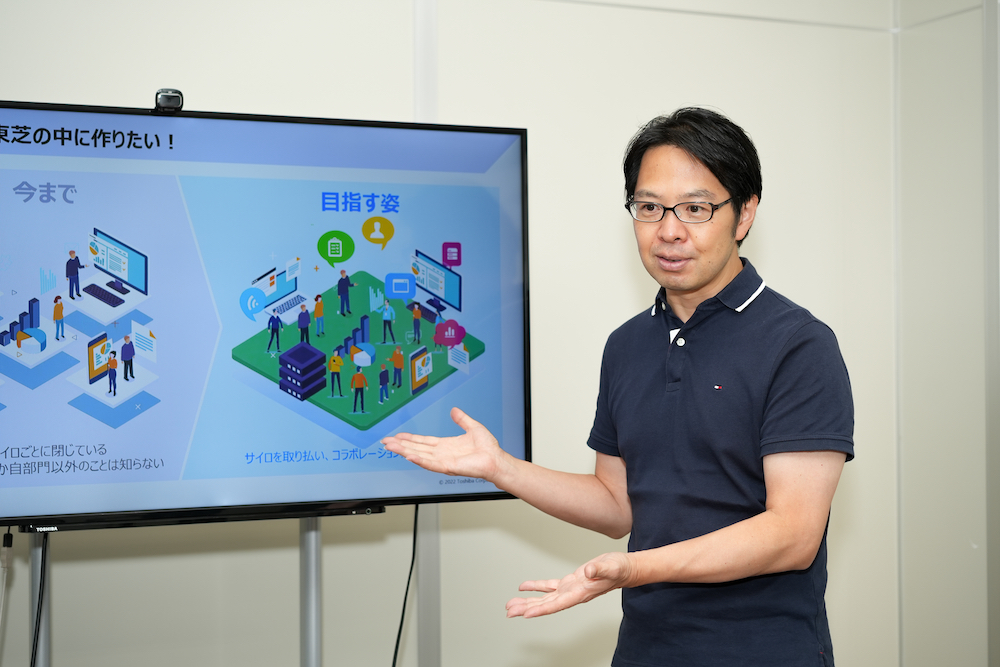
Yoshitake Kobayashi, General Manager, Corporate Software Engineering & Technology Center,
Corporate Technology Planning Div., Toshiba Corporation
In the world of software, companies and research institutes everywhere have benefited from open-source software (OSS). In an open source development, software copyright holders grant anyone and everyone the right to inspect, use, modify and distribute source code, free of charge. These days, it is hard to imagine a field where it is possible to develop products, solutions, and services without using OSS.
For example, Linux, the family of operating systems widely used in everything from the servers that support the Internet and cloud computing to TVs and smartphones, is OSS. Android for smartphones and Chromium, the engine of Google’s Chrome and Microsoft’s Edge and other browsers, are also OSS that are primarily developed and maintained by Google.
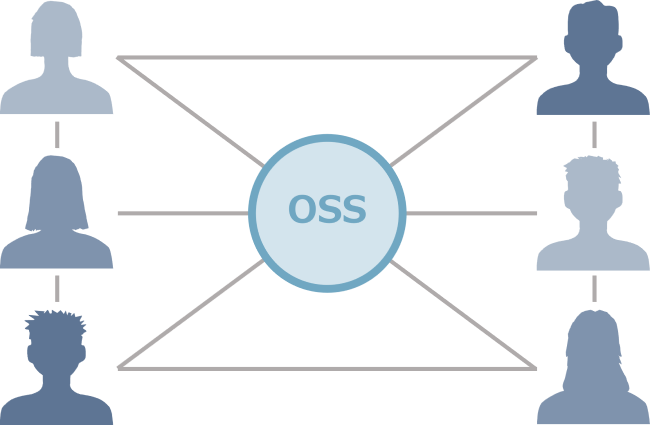
OSS is improved by multiple, decentralized co-developers, working autonomously.
One advantage of the continued involvement of large numbers of programmers and engineers in OSS co-development is that they find and fix software defects and bugs. Beyond that, developers break down the functions of the OSS and work on areas where they have expertise, an approach that brings improvements to the software’s user-friendliness, security and reliability.
Kobayashi offers an amusing analogy: “You can think of OSS as cooking with a recipe in the public domain. Anyone is free to use it, and they can tweak it and improve on it. OSS development is like creating a dish, the software, while improving the recipe, the source code, all done in a central kitchen, the open community, that can be used by people all over the world.”
Development in a central kitchen and enhancing Toshiba’s overall strengths
Kobayashi is sure that promoting OSS is helping to break down the internal and external rigidities, and likes the fact that it can bring about unexpected encounters. This has encouraged him and his team to try to bring the open source mechanism inside Toshiba, an approach he calls “internal openness,” which aims to encourage efficient development that transcends organizational barriers.
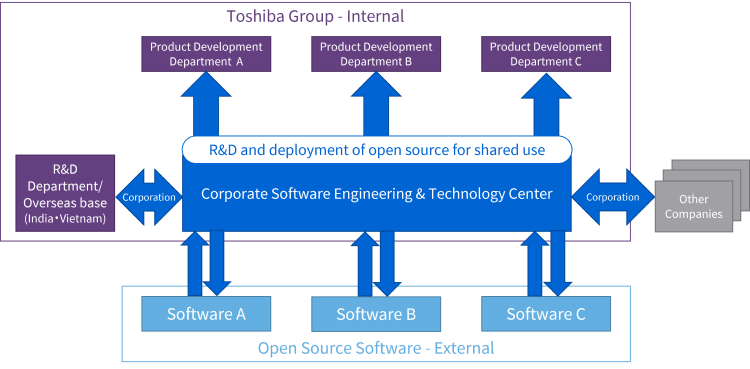
The open-source model can be used by any department, and enables efficient software development
“Toshiba is active in many aspects of social infrastructure, from power generation to railways, and our business units face shared challenges,” says Kobayashi. “Working together to solve these, and getting to know each other, will allow us to really demonstrate Toshiba’s collective strengths.
“Above all, we are all the same Toshiba, and in today’s world, which really demands productivity, it is inefficient to have software from one company and applications and hardware from another company that are not connected. Bringing the open-source concept to software development will allow us to solve these problems.
“To go back to the image of the central kitchen and recipes any chef can use, if we know who is using what recipes and what kind of food they are making, we can contribute improvements to each other’s food pairings to get the best combination of dishes and the best possible course menu. That’s what I mean by collective strength.”
Making this happen requires cutting-edge knowledge, and here the Corporate Software Engineering & Technology Center is honing its capabilities as a core research unit by working on OSS with third parties.
Changing the development culture with openness
Thinking about this, Kobayashi’s reform of Toshiba’s development culture through open source software is an almost unprecedented initiative among Japanese companies. I wonder if he has found it discouraging and ask him, but if the question is about frustration, his answer is just the opposite, unexpectedly easy and relaxed.
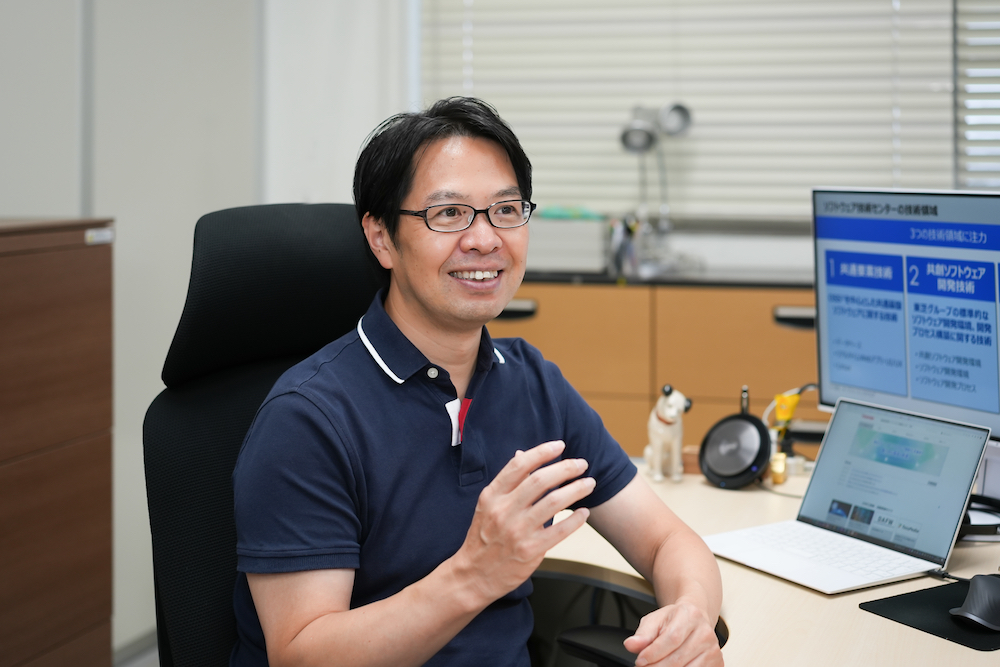
Picture of Dr. Kobayashi at the interview
“One of Toshiba’s values is “create together,” and I firmly believe that, given the opportunity, Toshiba can change. I think we have an advanced development environment, but even so it is impossible to instantly disseminate the idea of open source. One of the efforts I made was to bring people together at an early stage.
“There was really no precedent for our approach, so we sought out people at other companies who shared our awareness of the issue, held study sessions, and shared the results in reports on the content of the sessions. With time, we started talking, and we started to gradually resolve the problems we faced. This was an external initiative, but you have to look synergies among departments within the company in the same way. It’s too late to do that once you’ve finished work on a product or system development. It’s like when you are finalizing prototypes or concepts, it’s important to share information as early on as possible.
“Another thing we had to do was raise the level of our human resources. At the Center, we hold workshops called the Co-creation & Digital Talent Booster Program. This brings together people from different divisions to experience hands-on work and collaboration centered on co-creation.”
Open source breaks down external rigidities and improves overall strengths
Toshiba’s internal transformation through the open-source system is also mirrored in its interactions with the wider world, as the company advances its management strategy by taking on the external rigidities that stand in the way of increased collaboration. Toshiba has long provided highly reliable hardware for energy and other social infrastructure. Applying software defined to the continual expansion and updates of the software functions running on this hardware can only be done by adopting a multifaceted perspective, and this is where cooperation between leading companies becomes essential.
“Software that supports social infrastructure requires a high level of reliability, and there are issues that are difficult for Toshiba to resolve as a single company working alone,” explains Kobayashi. “However, we can arrive at essential solutions by sharing and repeatedly discussing issues. If you think about it, software is growing in scale and complexity every year, and it is very inefficient if companies compete against each other and all develop software separately.
“Toshiba and Germany’s Siemens came together to launch a community, the Civil Infrastructure Platform (CIP). Our aim was to bring multiple viewpoints to extending the functionality of social infrastructure software, which has to be continually updated. Other companies have now joined us, and global collaboration is underway. Adding the uniqueness of a lot of companies to this shared foundation should increase the participants competitiveness.”
We can summarize this story by thinking of a two-story structure. The first floor represents shared software, the second floor is the home of the company’s proprietary software, and it is possible to switch between floors, depending on the situation. Strategic moves are necessary to sustain the first floor, and participation in international projects like CIP is important, as it makes it easier to develop highly reliable software that can be applied to social infrastructure, in line with the company’s management strategy. In this way, alongside ensuring capabilities in reliable hardware, cultivated in nearly 150 years of manufacturing, Toshiba is laying the groundwork for advancing software defined.
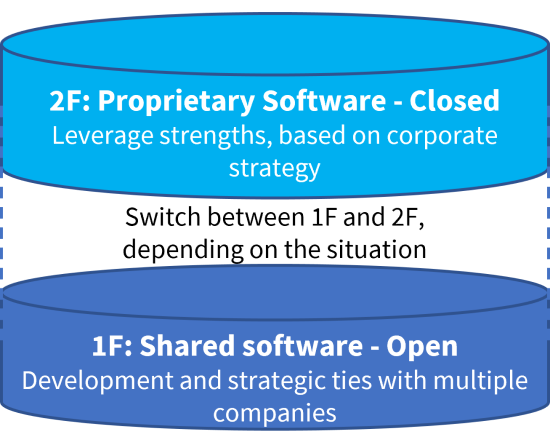
Using open and closed software development is important for software defined
“Toshiba is determined to make the world a better place,” says Kobayashi. “We are guided by our Basic Commitment, “Committed to People, Committed to the Future.” Our strengths lie in amassing and analyzing data for highly reliable social infrastructure data, and connecting that data realizes the next round of value creation. Building this mechanism, while also utilizing outside resources, is the flow of software defined for us.
“We want to push this forward. Of course, as a company, we will consider what we want to protect, and where we want to open up, and continue to come up with designs that only Toshiba is capable of.”
As the data economy develops, there are many areas that are expected to embrace openness. Mr. Kobayashi’s push to break through internal and external rigidities through open source is an excellent match for the times. The footsteps to Toshiba’s transformation can already be heard.
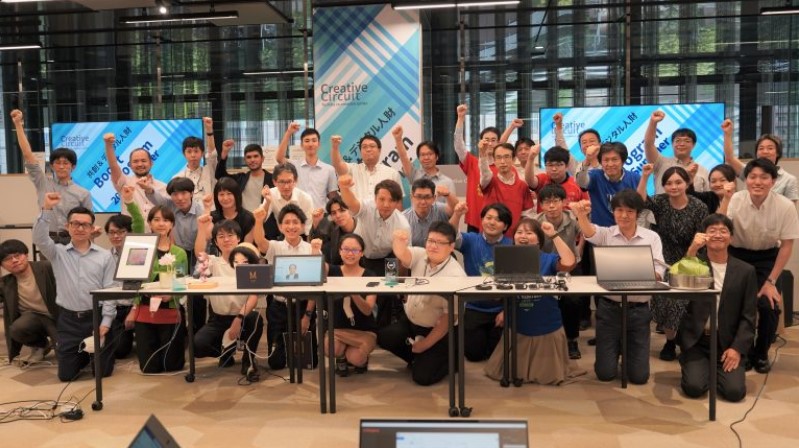
Photo of Co-creation & Digital Talent Booster Program
* Note: Departments and titles are as at the time of interviews.
![]()





